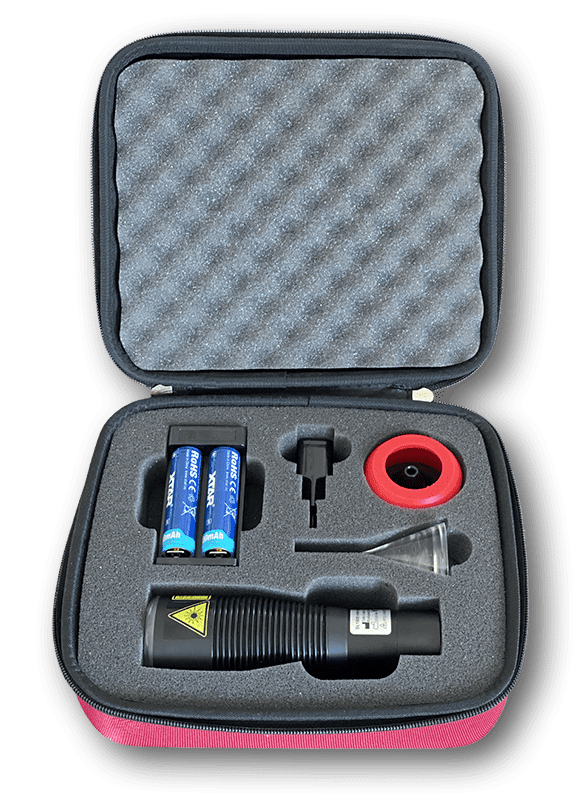Top Advice For Picking A Safe Laser Therapy
Top Advice For Picking A Safe Laser Therapy
Blog Article
What Is The Most Safe Low-Level Laser Treatment (Lllt) For Ulcerative Wunds?
Low-level laser therapy (LLLT) that is safe (LLLT) can help with ulcerative wounds through several mechanisms- Stimulation of Tissue Repair- LLLT increases cellular metabolism and expansion which results in faster tissue repair and renewal. It stimulates collagen synthesis, fibroblasts production and the development of blood vessels that are new and blood vessels, which are essential to heal wounds. This may speed up the healing of wounds caused by ulcers.
Reduced Inflammation LLLT has an anti-inflammatory effect by reducing cytokines that cause inflammation and encouraging mediators to reduce inflammation. LLLT can be effective in reducing the severity of ulcerative wounds where inflammation can cause tissue injury and delay healing.
Pain Relief - LLLT relieves pain from ulcerative lesions. These can be associated with discomfort or significant pain.
Enhanced Blood Circulation - LLLT boosts vasodilation and microcirculation leading to an increased blood flow to the site of wound. A better blood circulation system provides nutrients and oxygen to tissues. This helps promote healing and eliminates the waste products and toxins.
Antimicrobial Properties - LLLT is well-known to have antimicrobial effects, which may aid in reducing the risk of infection of wounds that are ulcerative. By encouraging bacterial clearance and preventing further colonization of the wound site, LLLT can help reduce the chance of developing wound infections and promote faster healing.
Reduced Scar formation Reduced Scar Formation LLLT helps minimize scarring from ulcers by encouraging tissue remodeling and regeneration. By stimulating the production of collagen fibers and encouraging aligning of collagen bundles, LLLT may help to produce more robust scar tissue.
In general low-level Laser therapy by Safe Laser aids in faster healing as well as less pain and better results for wounds. Talk to a healthcare professional before using LLLT on ulcerative lesions. Read the most popular safe laser 500 ár for website tips including lágylézeres készülék, lezer kezeles, lágylézer kezelés, laser lézer, lagy lezer, lágylézer árak, lágy lézer kezelés, lágylézer kezelés budapest, otthoni lézer kezelés, lágylézeres készülék and more.
What Can Laser Therapy Treat Nose Issues?
Safe Laser Low-Level Laser Therapy (LLLT) can be used to treat numerous nose conditions using several mechanisms. The reduction of inflammation LLLT's anti-inflammatory properties may reduce inflammation in the nasal passages. LLLT is a treatment option to treat issues such as sinusitis and rhinitis.
Pain Relief - LLLT helps to relieve pain in conditions like nasal trauma and sinusitis.
Improved Tissue Repair LLLT accelerates healing and repair of tissues through stimulating the cellular metabolism. LLLT assists in promoting faster healing for nasal ulcers, nasal mucosal wounds as well as other ailments.
Improved Circulation - LLLT improves vasodilation, microcirculation and blood flow in the nasal tissues. The improved blood circulation assists in delivering oxygen, nutrients, and healing agents to injured or inflamed tissues.
Reduction in nasal congestion LLLT aids in reducing nasal swelling by encouraging dilation of the vascular tract. This can be particularly beneficial for individuals with conditions such as allergic rhinitis or chronic sinusitis, where nasal congestion is a common manifestation.
Management of Nasal Allergies Treatment of Nasal Allergies LLLT can reduce the symptoms that are associated with allergies in the nasal passages by decreasing inflammation. LLLT can reduce symptoms of sneezing as well as itching and congestion of the nose through improving your immune system.
Overall, safe Laser low-level laser therapy provides an effective and non-invasive approach to managing various nose problems, providing relief from symptoms such as pain, inflammation, as well as nasal congestion. However, it's important to consult a medical expert for a proper diagnosis and treatment recommendations before making use of LLLT for nasal conditions. Take a look at the top rated safe laser árak for blog info including safe laser kezelés budapest, lagy lezer, lágy lézer vélemények, lágylézer kezelés árak, lágy lézer kezelés, mozgásszervi problémák, safe laser használata, lágy lézer kezelés, lágylézer ár, otthoni lézer kezelés and more. 
What Is The Time A Safe Laser Device Take To Affect Conditions Affecting The Ears, Nose, And Throats?
Safe Low-level therapy with lasers (LLLT) can be utilized to treat ENT ailments, may have varying results depending on the specific condition that is being treated. Other variables include the severity of the issue and the patient's response treatment. Typically a series of LLLT over a specified time is recommended to get the best results.
Type and severity- The type and the degree of the ENT disease that is being treated will affect the amount of LLLT sessions that are needed. For conditions like laryngitis and tonsillitis and tonsillitis may require different treatments.
Individual Response To Treatment A person's overall health, immunity, and healing capability will all affect their response to LLLT. Some individuals will respond more quickly to treatment and experience a faster improvement in symptoms. Others may require more time for treatment.
Treatment Protocol- The treatment procedure recommended by an ENT specialist will play a significant influence on the number and frequency of LLLT sessions for ENT conditions. Healthcare professionals can tailor treatment plans for each patient. This could include scheduling LLLT at different times throughout the week, or at specified intervals.
Chronic Conditions Contrast. Chronic Conditions- The distinction between acute and chronic conditions can also impact the number of LLLT sessions needed. Acute sinusitis such as acute pharyngitis, or acute sinusitis, may require fewer treatments to get relief. Chronic diseases like chronic rhinosinusitis, such as chronic laryngitis will require a longer duration of treatment.
Although some people may see improvements in ENT conditions after just a few LLLT sessions, some may require a longer-term treatment plan for optimal outcomes. For ENT conditions, it is essential to adhere to the treatment prescribed by an ENT doctor and attend the scheduled LLLT sessions. To ensure that you receive the most effective treatment, communicating with an ENT specialist and continuous surveillance of symptoms is essential.